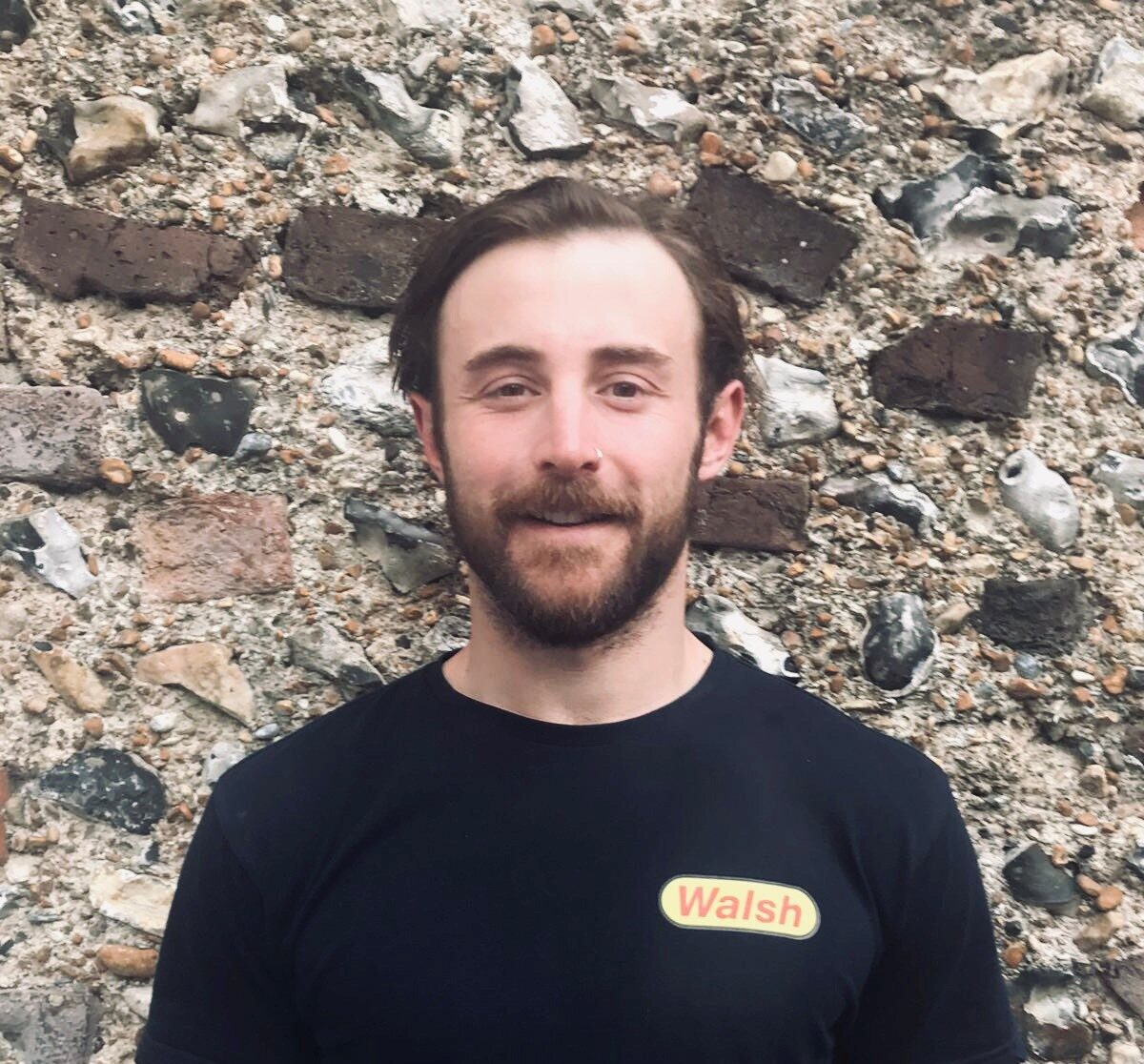Dan recently started with S. Walsh and Sons, bringing to them both Thames experience and experience from the workboat sector in his homeland – Australia!
Who are S. Walsh and Sons and what are your specialisms?
S Walsh and Sons is a leading provider in rail, road, and river freight transport solutions in London, UK. We have a versatile fleet which operates in muck-away, aggregate delivery and civil construction operations.
When did you start with S. Walsh and What is your role?
My current role at S. Walsh is Marine Fleet Engineer. In broad terms, this involves the upkeep of all vessels whether it be certification, maintenance, dry docking, and reparations. I started the role in January 2021 having moved over from another barge and tug company in London.
Where did your interest with boating begin?
Growing up on the coast of Australia, I have always had a strong connection to the sea with many days spent surfing, fishing, or diving. Our family always had boats so my induction into boating began from a young age and I became particularly interested in work boats and their capabilities from early on. Over the years, my passion for the work boat industry has only grown and I am still as interested now as I was as a kid.
Where has your career taken you so far?
I started my first job on the water at age 13 working in the commercial fishing industry as a mate in New South Wales, Australia. At 22 I moved up to the Far North Queensland working as Relief Master and Chief Engineer on a multipurpose workboat. This involved various commercial projects including repairing weather stations 600nm offshore in the Coral Sea. After meeting my British partner on one of these projects, I moved to London where I started my UK career as Deputy Fleet Superintendent for a similar company working on the Tideway Tunnel Project. Our role was the towing and pushing of craft along the Thames delivering aggregate and transporting muck on the western sector.
Many people who work on the Thames say it is an extremely special place to work, can you support this?
The Thames can be such a busy place and there is so much variety. With a tidal range of 7m and tugs pushing and towing 1600t barges through navigational nightmares, such as bridges, piers, traffic, and varying tidal streams. It is a testament to the skills and knowledge acquired that the lighterman of the river have honed over 507 years. If you aren’t watching your air draft, you are watching your under keel clearance with 7 knots of tide. There is also a strong wildlife presence from a variety of water birds, seals and even the stray pilot whale.
Do you have a favourite vessel from the fleet?
This is a hard decision between the SWS Endurance (Damen Multicat) and the SWS Endeavour (Concordia Damen pusher tug CS874). However, I think the winner must be the SWS Endeavour which was launched at the end of 2020 to the highest standard. It has two Caterpillar C18 engines which operate two Twin Disc Veth Azimuth stern Drives. This is the first pusher tug on the river to have ASD propulsion. The ASD system has shown 100% control during difficult maneuvers with barges up to 2600t. The finish of the accommodation is akin to a modern hotel room with superior amenities to maximise comfort for long voyages on the vessel. The vessel also has an elevator wheelhouse which has an eye height limit of 13m.
What projects are you working on today?
S. Walsh are currently working on three main projects on the Thames, this includes muck away from Silvertown to East tilbury operating 2x1500t barges with another one of our pusher tugs (13.3m/elevating wheel house). The second contract is delivering aggregate from Dagenham to Fulham with 500t barges and a 1203 Damen stan tug 1205.
The last project is one that I believe has shown London how the river can supply a much more efficient way of aggregates and muck away with large volumes. Currently the project has moved 4 million tonnes of aggregate and taken 250,000 trucks off the road. Walsh have a number of sections on the project which use a small Damen pushy Cat, Damen Multi cat 1908 (2019) and a brand-new Concordia Damen pusher tug with the first ASD operated pusher vessel on the river Thames.
How do you think the Thames Maritime Community will change over the next few years to meet the UK’s Clean Maritime targets?
S. Walsh is now looking into a new renewable fuel source known as HVO which will replace the 10ppm low sulphur diesel. We also like to keep out fleet to a modern level with more efficient main engines and generators as they are built to highest emission standards. I know there has been hype into hybrid or fully electric engines and propulsion system on the Thames so we hope to see the technology be adequate for the everyday activities the river provides.
Do you see new opportunities on the Thames for helping reduce (greater) London’s emissions?
I see the Thames playing a critical part in the reduction of emissions throughout greater London. Already The tideway Tunnel project has shown how many trucks can be taken off the road. With already existing waste removal contracts by Cory Energy, parcel delivery for DHL and soon to be Sainsbury deliveries all by river. The Thames can be the key link to keeping one of the worlds most connected city, environmentally friendly.

